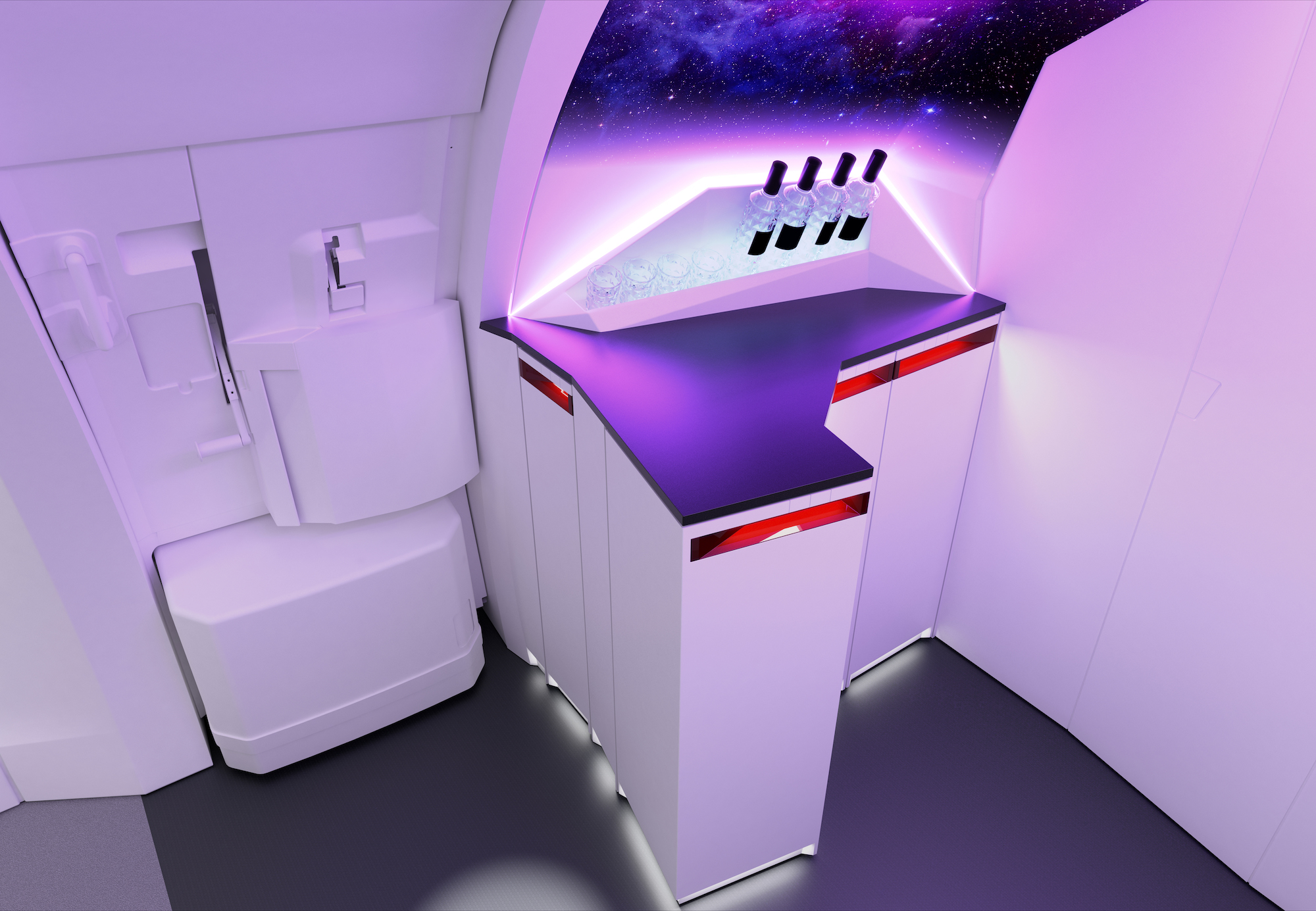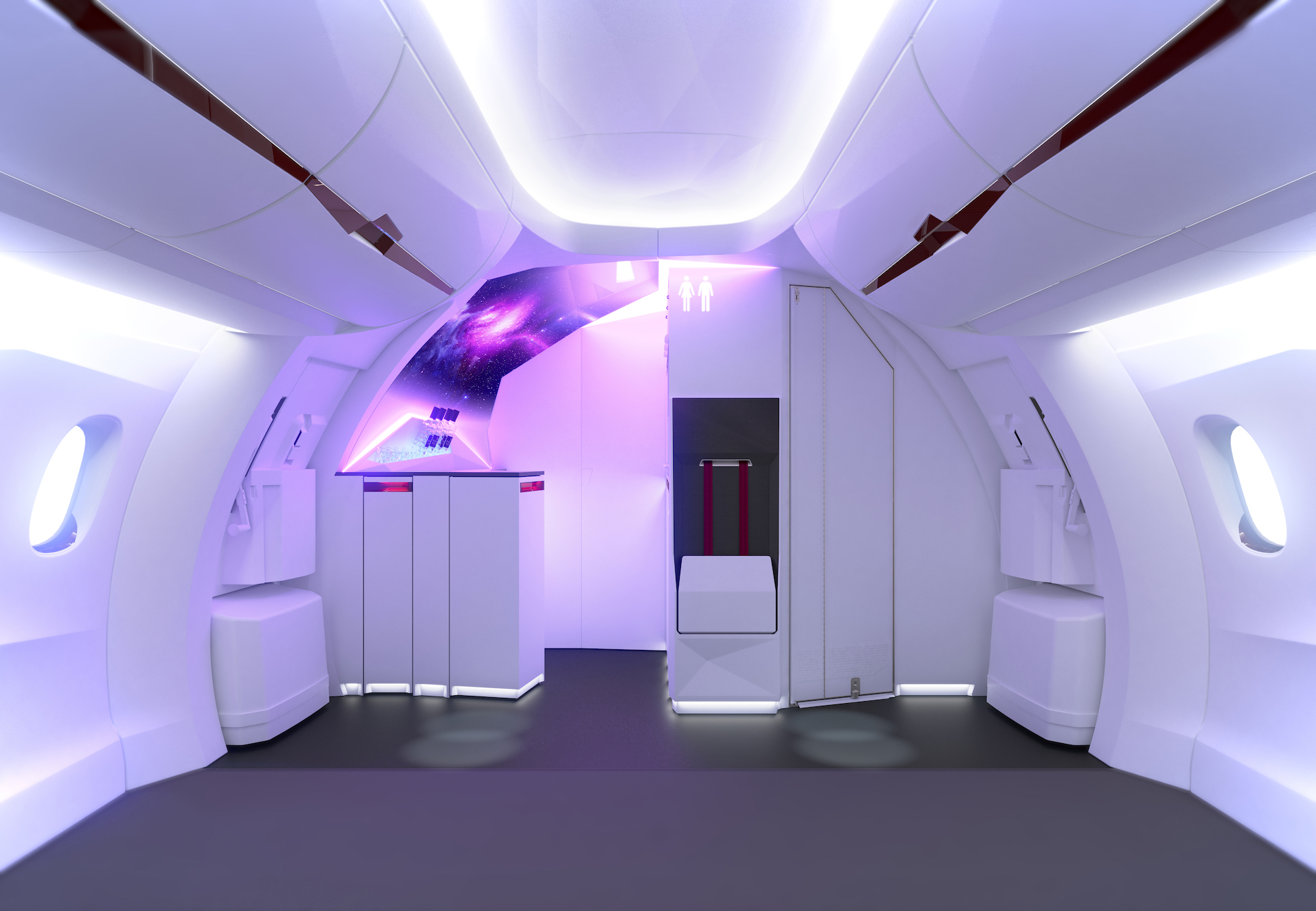With much attention being paid to the back of narrowbody aircraft in recent years, thanks to initiatives including Airbus’ Space-Flex galley-lavatory combination, Lufthansa Technik & Diehl’s proposal in response to it, as well as Rockwell Collins’ 737 Advanced Lavatories, the front of the aircraft has largely been ignored.
Airbus’ A320 Airspace cabin brings a sweeping statement thanks to an overhead welcome light fixture, but the new SYLVIA concept from Diehl goes a lot further, with a futuristic modular approach offering numerous options for customisation, in the context of new-generation narrowbodies like the Boeing 737 MAX and Airbus A320neo families of aircraft, which are already operating on routes of more than seven hours.
“SYLVIA is a concept which offers more flexibility in the entrance area,” the company’s vice president for communications and public relations David Voskuhl tells Runway Girl Network. “The new longer range opportunities of latest single-aisle aircraft versions result in new and different crew and passenger requests. The new SYLVIA concept with the generated free space on the left-hand side offers the possibility and flexibility for new modules with different use cases.”
“The concept was developed for single aisle aircraft and combines the lavatory and the galley monument to one module on the right-hand side using systems synergies,” Voskuhl says. “The generated free space on the left-hand side can be used for various customised usage.”

Concept options include a fold-out bar area, allowing passengers to stretch their legs on longer journeys. Image: Diehl
That customisation aspect is key to the concept.
On the left-hand side of the aircraft, airlines’ options include a dry galley, with stowage for additional passenger service trolleys and Atlas containers. The dry galley can also include additional work areas, spaces for passengers to use a self-service bar or drinks cabinet. Other options include a privacy crew module for rest, a business work area or lounge space for passengers, a social or bar area.

Airlines can combine their need for storage with their desire to create social spaces for passengers. Image: Diehl
On the right-hand side, a wet galley module includes the usual necessities like a plumbed sink, waste disposal, beverage units, ovens, Atlas containers, and storage for three half-sized trolleys.
Diehl is also mooting options for customisation and branding, an aspect of the passenger experience that many airlines are seeking, including bespoke layouts, designs and decorations, plus beamer lighting, light wash combinations, and entrance space light and décor features.
“The concept is based on the footprint (Door 1 entrance area) of the A320 family, and fits to minimum aisle requirements. The gallatory,” which Voskuhl explains is a combined galley-lavatory module, “is placed at standard Galley A position,” with the flight deck aisle in the same position on the aircraft’s y-axis. It is unclear how airlines, regulators and security bodies will respond to options which include passengers being encouraged to loiter in a bar area

Rethinking the area in front of doors 1 on narrowbody aircraft is a smart move for airlines and the rest of the industry. Image: Diehl
There are, of course, some tradeoffs to changing the way that airlines use the space in these aircraft, Voskuhl says. “In order to offer the configuration and customisation opportunities in the ‘free space’ on the left-hand side, a maximum configuration with two ovens in the galley and smaller space in the lavatory is given.”
In addition, passengers may not be thrilled by the “gallatory” hybrid galley-lav module. “The lavatory is smaller than a standard single Lavatory A at Door 1 position. But it fulfils the minimum requirements regarding, for example, standing height. It’s also a high density solution, comparable to a Space Flex (”SkyPax”) solution,” Voskuhl notes, suggesting that. “the concept offers optimised space utilisation between space demand of galley equipment and comfortable usage of the lavatory.”
SYLVIA has been initially created for the larger footprint of the A320 family, which offers airlines a slightly larger space in which to fit the pieces of the proverbial jigsaw. “For a 737 application, the concept has to be adapted/investigated to the 737 entrance area,” Voskuhl says.
The concept is presently at what Voskuhl calls “an earlier stage in the development process” in response to an RGN question about certification, and is on the Crystal Cabin Awards shortlist, set to be awarded in Hamburg this April.
Related Articles:
- More space, less flex in Diehl and LHT galley-lav combo retrofit option
- Diehl stays flexible in face of A380 output cut, industry consolidation
- No prize, no problem for aircraft interiors specialist Diehl
- Airbus A380 cabin enablers fail to lure new operators for the type
- Airline reveals its concerns about new Airbus lavatory/galley option









